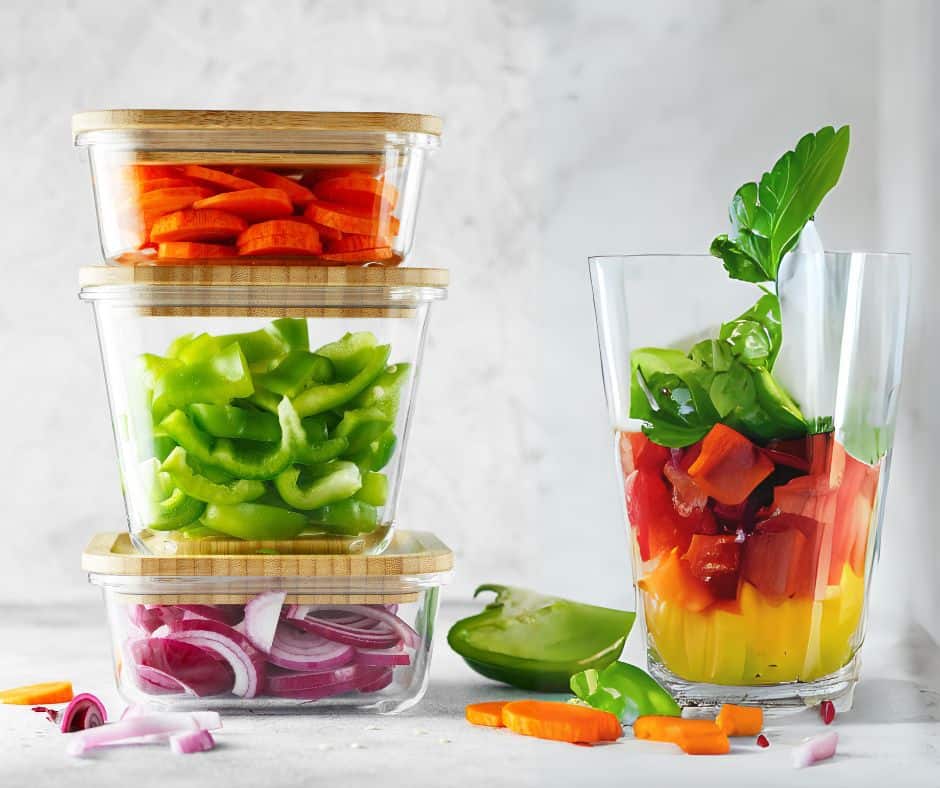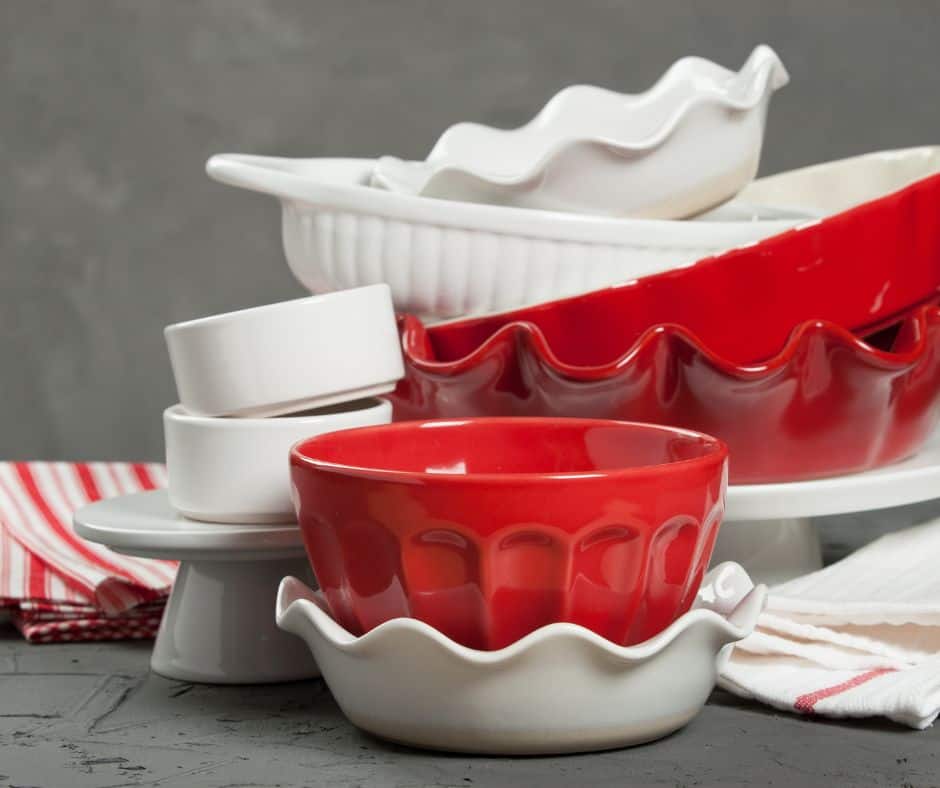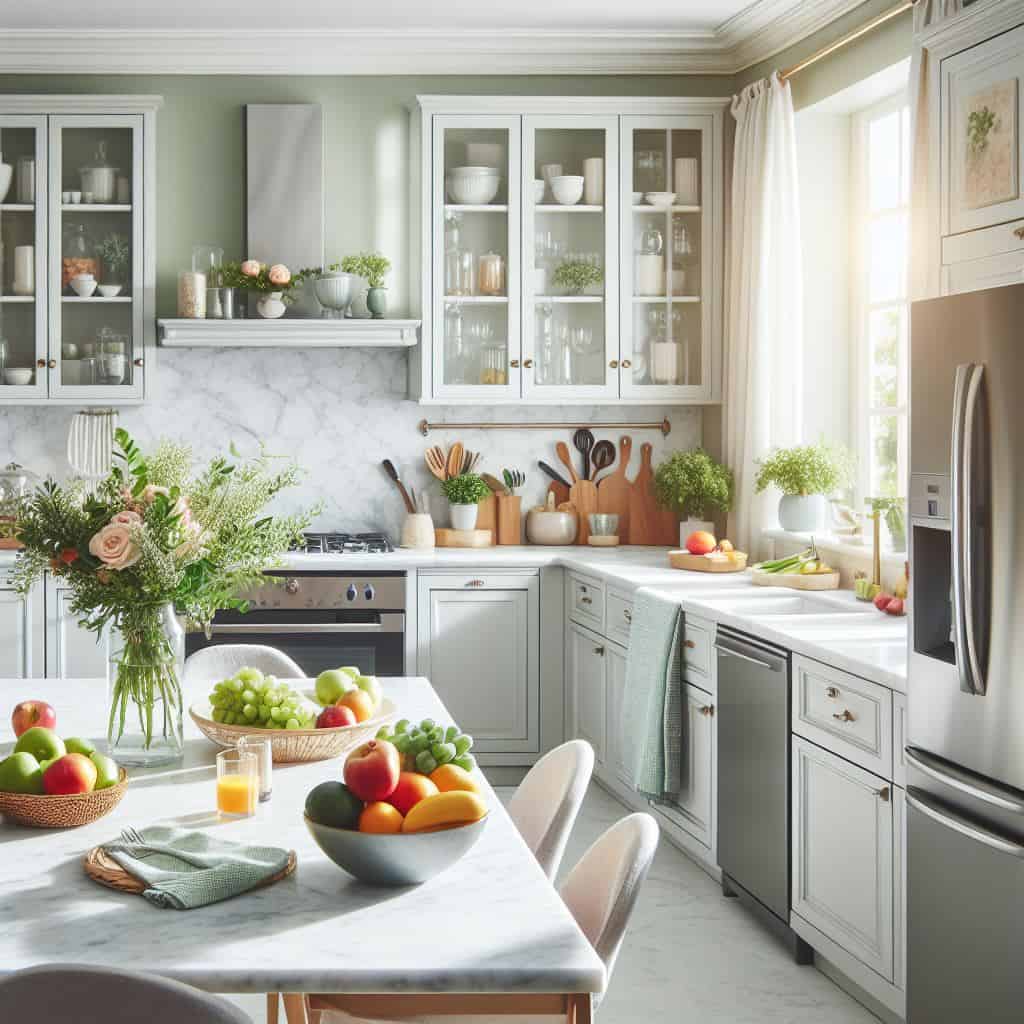15 Essential Steps to Achieve a Non-Toxic Kitchen This Year
Dream of creating healthy meals in a worry-free zone? Turns out, the tools you use might be hiding harmful toxins! Don’t fret, this guide unlocks the secrets to a non-toxic kitchen, one step at a time.
What is Kitchen Toxicity?
Imagine your kitchen as a friend, but a friend who sometimes sneaks nasty chemicals into your food or drink. Yikes! That is “toxicity” in the kitchen. It’s about harmful things like Teflon, BPA, and lead that can leach into your food and drink making you feel sick with headaches, allergies, or worse.
Where Do These Toxins Hide?
Dangerous chemicals are found in many kitchen items. This includes cookware, containers, and cleaning products, so it’s important to choose safer options.
What Are The Health Risks?
Here is a summary of the potential risks associated with harmful toxins commonly found in the kitchen.
| Toxin | Potential Health Risks |
|---|---|
| Bisphenol A (BPA) | - Disruption of hormone function (endocrine disruption) – Potential increased risk of certain cancers (breast, prostate) – Developmental problems in children – Increased risk of heart disease and diabetes |
| Teflon | – Increased risk of certain cancers (kidney, testicular) when heated to high temperatures – Thyroid hormone disruption – Immune system problems – Birth defects – Respiratory problems – Flu-like symptoms – Infertility |
| Lead | – Damage to the brain and nervous system, especially in children – Learning and behavior problems – Kidney damage – Pregnancy complications |
| Phthalates | – Hormone disruption – Reproductive problems – Developmental problems in male babies – Asthma and allergies |
| Melamine | – Kidney damage – Reproductive damage – Increased risk of kidney stones – Bladder cancer |
| Aluminum | – Bone diseases like osteoporosis – Alzheimer’s disease – Damage to the brain and nervous system, especially in children – Learning and behavior problems – Kidney damage |
| Nylon | – Microplastics contamination in food and water (from synthetic textiles) – Limited research, but potential concerns include release of harmful substances at high temperatures |
| Silicone | – Generally considered safe, but low-quality silicone can contain fillers that may leach chemicals creating potential for hormone disruption |
| PFAS | – Increased cholesterol levels – Changes in liver enzymes – Increased risk of thyroid disease – Decreased vaccine response in children – Increased risk of high blood pressure or pre-eclampsia in pregnant women |
| PFOA | – Cancer – Liver damage – Thyroid disease – Decreased fertility – Increased risk of asthma – Developmental effects in fetuses during pregnancy and infants |
| PFOS | – Liver damage – Thyroid disruption – Developmental effects in fetuses and children – Immune system effects – Potential carcinogen |
Please Note: This table is not an exhaustive list of all potential health risks associated with these toxins. The research on these substances is ongoing, and the evidence for some of the listed risks is still evolving. It is important to do your own research and consult with a healthcare professional for personalized advice on reducing your exposure to these toxins.
Here are a list of great resources if you wish to find more information:
Your Non-Toxic Kitchen: A Step-by-Step Guide
Now that we have discussed the reasons WHY you should consider creating a non-toxic kitchen in your home, let’s discuss the HOW. Instead of aiming for a complete overhaul, focus on small, achievable changes. Here are 15 steps to get you started.
1. No More Teflon Cookware
Probably the biggest step you can take towards creating a non-toxic kitchen is to swap your Teflon pans for safer alternatives. Teflon, the non-stick coating on many popular pans, has been linked to health concerns like respiratory issues, thyroid disruption, and even cancer.
Safe cookware options include stainless steel, cast iron, or ceramic. These options are free from harmful chemicals and offer excellent cooking performance. They’ll also last longer and heat food more evenly, leading to delicious results.
2. Use Glass, Not Plastic
Plastic can leak chemicals, like BPA (bisphenol A), into your food. Switch to glass containers for a safer and healthier option. Glass is inert, meaning it won’t interact with your food or introduce unwanted chemicals. Plus, glass containers are durable, easy to clean, and won’t warp or stain like plastic.

3. Utensil Upgrade
When it comes to healthy cooking, the tools we use matter just as much as the ingredients. An easy step towards creating a non-toxic kitchen is to ditch plastic, Teflon, aluminum, melamine, and nylon utensils, as they can leach harmful chemicals or harbor bacteria.

Instead, choose eco-friendly utensils made from bamboo, stainless steel, or wood. These materials are safe, durable, and sustainable. Plus, they come in a variety of styles to match any kitchen decor.
4. Safe Dishware and Glasses
Avoid dishware and glasses containing lead or harmful chemicals. Stainless steel, glass, and bamboo are fantastic alternatives in your pursuit of a non-toxic kitchen.
These materials are durable, and stylish, and won’t leach toxins into your food or drinks. Look for certifications like “lead-free” or “BPA-free” for added peace of mind.
5. Bake with Peace of Mind
Another step you can take towards creating a safe, non-toxic kitchen is to replace nonstick and silicone bakeware. Baking dishes made with ceramic, cast iron, or glass are safer materials allowing you to bake delicious treats without worrying about harmful chemicals leaching into your food. Plus, they’re naturally non-stick and easy to clean.

6. Wrap It Up Green
Plastic wrap and tin foil are harmful to both your health and the planet. They are not environmentally friendly because of how they are manufactured and disposed of. They also raise health concerns because of the risk of chemicals migrating into food, especially at high temperatures or with acidic foods.

Instead, consider using beeswax wraps, high-quality silicone food covers, or reusable containers made from natural materials like bamboo or stainless steel. These eco-friendly alternatives are safe, effective, and look great too!
7. Breathe Clean Air
Poor air quality can impact your health, causing respiratory problems, allergies, and headaches.
Use air purifiers, ventilate the kitchen well, and avoid harsh cleaning chemicals to keep your indoor air clean and healthy.
8. Filtering Your Water
Tap water can contain harmful contaminants like chlorine, lead, and pesticides. These toxins can affect taste, irritate sensitive stomachs, and even pose long-term health risks.

Water filtration is another small step you can take towards creating a non-toxic kitchen and to ensure you and your family are enjoying clean, healthy drinking water. Choose a filter certified to remove the specific contaminants you’re concerned about.
9. Skip the Fragrance
Artificial fragrances found in many personal care products and cleaning supplies can trigger allergies, headaches, and other health problems.
Choose fragrance-free alternatives or products made with essential oils or natural ingredients. Your nose and your lungs will thank you!
10. Choose Organic, Locally Grown, Plastic-Free Produce
Support sustainable agriculture and reduce your exposure to harmful chemicals by choosing organic, locally grown produce whenever possible. This not only benefits your health but also supports your local farmers and reduces your carbon footprint. Look for farmers’ markets or CSA programs in your area.

11. Clean Green
Another small step you can take towards creating a non-toxic kitchen is to replace harsh chemical-laden cleaning products with eco-friendly alternatives made from natural ingredients like vinegar, baking soda, and essential oils. These gentle cleaners are effective without compromising your health or the environment. You can even find recipes online to make your own cleaning solutions!
12. Grow Your Own Herbs
Enjoy the freshest flavors and peace of mind of knowing your herbs are toxin-free by growing your own windowsill herb garden. Start with easy-to-grow herbs like basil, parsley, and thyme. You’ll be surprised how much joy and fresh flavor a little herb garden can bring to your kitchen.

13. Swap Out Plastic Sponges
Instead of using plastic sponges, which can harbor bacteria and leach microplastics into your dishes, an easy step towards creating a non-toxic kitchen is to try reusable dishcloths or sponges made from natural materials like cellulose or loofah.
Not only are these options more hygienic and sustainable than their plastic counterparts, they will last longer too! You can even find cute and colorful dishcloths to add a touch of personality to your kitchen!
14. Avoid Plastic Cutting Boards
Some low-quality plastic cutting boards may pose potential risks. It is safer to choose wooden or bamboo boards as these options are less likely to harbor bacteria and won’t dull your knives as quickly. Plus, they look great in any kitchen!

15. Consider Getting an Induction Stove
Induction stoves are a game-changer in the kitchen. They heat your food directly, without heating the surrounding area, which means you save energy and keep your kitchen cool.
In your quest for a non-toxic kitchen, these stoves are safer than gas stoves as they don’t produce any harmful fumes. While they may have a higher initial cost, the energy savings and health benefits can make them worth the investment in the long run.
Bonus Tip
Invest in a good set of kitchen towels made from organic cotton or linen. These towels are absorbent, durable, and eco-friendly, making them a perfect addition to your non-toxic kitchen.
Final Thoughts
Creating a non-toxic kitchen in your home is an ongoing process that takes time but every small step counts!
By implementing the changes outlined in this guide, you can transform your kitchen into a safe and healthy space for you, your family, and the planet.







